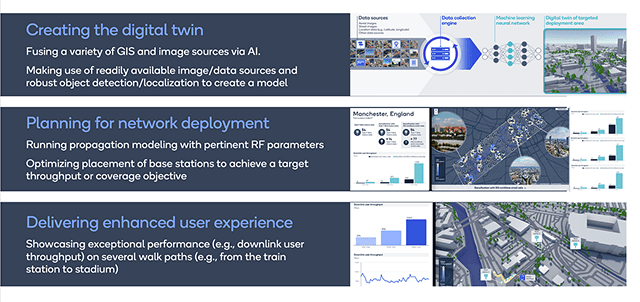Artificial Intelligence (AI) has had a profound impact on various industries, transforming our daily routines and becoming one of the most disruptive technologies on the horizon. The recent surge in media attention surrounding ChatGPT has fueled cutting-edge AI research, propelling us towards innovative possibilities. Our mission is to responsibly bring the benefits of AI to people worldwide, enhance mobile experiences, and enable new efficiencies in consumer, enterprise, and industrial applications.
The Hybrid Future of AI
To achieve our vision, fostering AI advances through cutting-edge research is crucial, as is driving the continued evolution of wireless technology. By combining AI and wireless capabilities, we create a powerful synergy that fuels future innovations. The future of AI lies in a hybrid approach, where AI computation is strategically split to provide enhanced experiences and ensure efficient resource utilization.
AI Benefits for Wireless Systems
In the age of 5G, intelligent devices and services are rapidly proliferating, with over 1.5 billion connections worldwide. AI not only revolutionizes mobile experiences, such as improved camera quality and predictive texting, but also presents a unique opportunity to transform the future of wireless communications.
AI’s immense potential can address complex challenges in wireless system design. For example, our Snapdragon Modem-RF platforms have integrated AI to enhance modem-RF system performance, showcasing the role of AI in optimizing the end-to-end wireless system. Let’s explore how AI contributes to different parts of the system:
Optimized Distributed Clouds
AI enables fully autonomous networks, making predictive and preventive operational optimizations on a continuous basis. By reducing network loading, AI ensures improved efficiency and better resource allocation
Intelligent Disaggregated Network
AI powers the intelligent controller of the radio access network (RAN), enhancing interference management, transmission scheduling, and coordinate multipoint (CoMP) operations. It enables more effective control and optimization of network resources.
AI-Enabled Air Interface Design
AI fundamentally transforms the design and evolution of the air interface, including waveform and coding. It introduces new capabilities like dynamic channel adaptation, enhancing the overall efficiency and performance of wireless communication.
Smart Edge Devices
AI optimizes device experiences through efficient beam management, accurate channel feedback computation, and advanced capabilities like positioning and RF sensing. These enhancements improve the overall performance and user experience of edge devices.
Adaptive RAN operation for 5G
We used our 5G test networks to demonstrate wireless AI earlier this year at our San Diego offices to show off its advantages in real-world applications. Watch Demo here
AI for Optimized Network Deployment
In addition to its impact on wireless systems, AI plays a vital role in facilitating optimized network deployment strategies. For instance, we have developed an intelligent network planning tool that leverages AI to create a digital twin of the deployment area. By running it through a trained machine learning model, we can generate an optimized network deployment plan based on design requirements (e.g., capacity, speed) and constraints (e.g., cost, infrastructure type). This approach ensures flexibility and efficient utilization of resources, resulting in improved network performance.

The Wireless AI Era Starts with 5G Advanced
To fully unlock the benefits of wireless AI, standardization of technology is essential. Establishing standardized frameworks for wireless AI ensures seamless interoperability across multiple vendors and the entire end-to-end wireless system. The work on 5G Advanced began in late 2021 under the 3rd Generation Partnership Project (3GPP), focusing on studying a standardized wireless AI framework and its potential applications. This collaborative effort aims to drive advancements in wireless AI, enabling new system efficiencies and user experiences.
Recent Wireless AI Demonstrations
At Qualcomm Technologies, we actively research wireless AI and contribute to technology standards. We also prototype various use cases in our test networks. Here are three recent wireless AI demonstrations:

Multi-Vendor Channel State Feedback
We prototyped using the Qualcomm Cloud AI 100 platform and Snapdragon Modem-RF system in our 3.5 GHz massive MIMO testbed. This demonstration showcases the capacity gain achieved in a multi-vendor system through sequential learning, preventing proprietary knowledge sharing.
Advanced mmWave Beam Management
In our 28 GHz mmWave testbed in San Diego, we enabled predictive beam management for both the base station and devices. This implementation reduces signaling overhead, resulting in increased usable capacity and extended device battery life.
Intelligent Industrial Positioning
In our indoor industrial IoT testbed, we demonstrated centimeter-level positioning accuracy. Overcoming the challenges of multipath reflections, AI-based downlink RF fingerprinting outperforms other positioning techniques like downlink time difference of arrival in this complex environment.
Looking Ahead to 6G: An AI-Native Communications System Design
While 5G Advanced marks the beginning of the wireless AI era, our vision extends to 6G. We envision 6G as an AI-native innovation platform with a data-driven design that integrates AI throughout all protocols and layers. This approach allows continuous improvement as more data is collected. Our current research focus is on enabling efficient joint training, model sharing, and distributed inference across networks and devices. Federated learning, which scales fully with 6G, plays a crucial role in realizing this vision.
The future of wireless communications is being revolutionized by AI. As 5G Advanced kicks off the wireless AI era, Qualcomm Technologies remains at the forefront of research, standardization, and product support. We are excited about the potential impact AI will have on wireless communications and will continue to share updates on our advanced research and achievements. Stay tuned for more groundbreaking developments in the wireless AI space.


[…] AI and hybrid clouds will power satellites in the future […]
[…] revised wireless controller that supports Xbox Wireless 2, Direct-to-Cloud, and Bluetooth 5.2 will be included with the […]